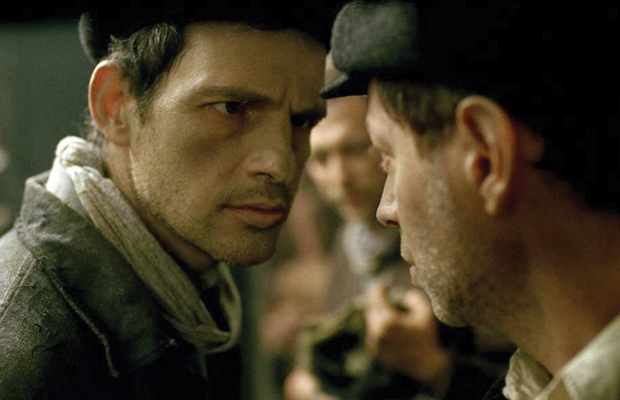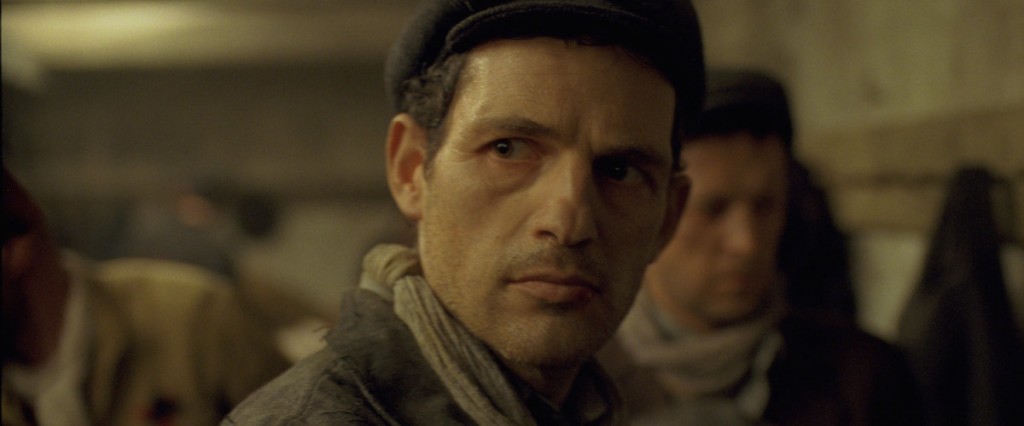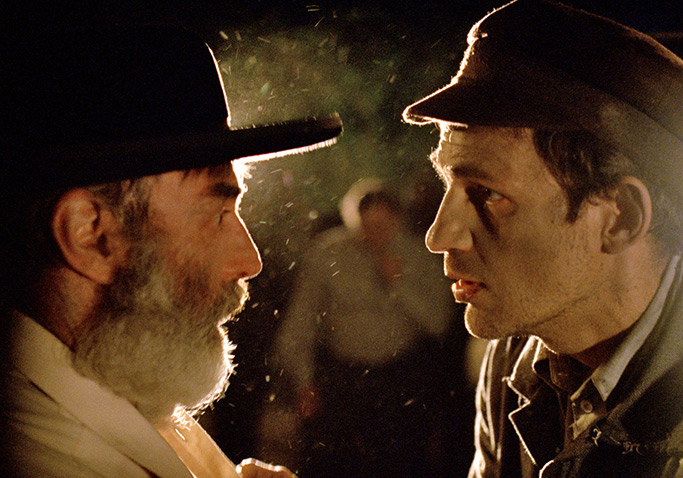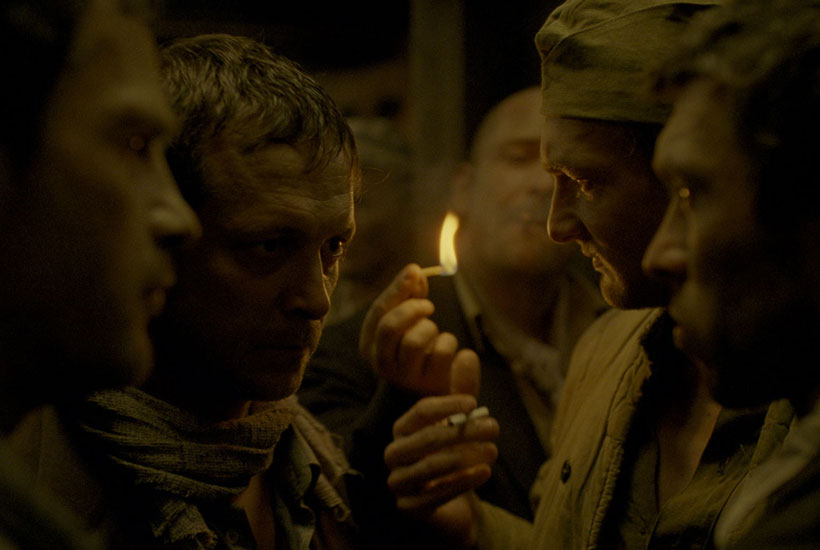Commissioned by a Hungarian art museum.

Arguably, one of the more questionable and limited practices of film historians is the classifying of films and filmmakers according to a certain form of tribalism known as nationality. The problem with this admittedly convenient and obvious method of cataloging is that important elements–perhaps even essential ones–that elude or defy tribalism may get lost in the shuffle.
For starters, many of our greatest filmmakers – Chaplin, Dreyer, Hitchcock, Jancsó, Murnau, Renoir, Sirk, Stroheim, Welles — can’t be tied to a single country or tribe without being drastically oversimplified in the process. And even though most of what we call neorealism is Italian, this tends to overlook the fact that comparable examples can be found elsewhere in the world, not only in the 20th century but in the new millennium as well.
In the two short films that Nemes Jeles László made for the Inforg studio in 2007 and 2009, Try a Little Patience and The Counterpart, one can already find not only the same camera techniques, themes, and even emotions that will characterize his 2015 masterpiece Son of Saul — such as a mise en scène constructed in relation to close-ups, the experiences of a war prisoner, and a male adult’s feeling of tenderness towards a boy — but also, even more fundamentally, a sense of universality that goes beyond nationalism and tribalism. Both these films significantly have English titles (although the first originally had a Hungarian title, Turelem), and whereas much of Try a Little Patience suggests a ‘first draft’ of Son of Saul, The Counterpart begins with the elemental fact of two naked men, before their getting dressed redefines them as two armed soldiers.
Regarding Son of Saul, Nemes and his lead actor Géza Röhrig have both described their intentions for viewers to experience viscerally and as accurately as possible what members of the Sonderkommando went through in Auschwitz in October 1944. These were the Jewish prisoners obliged to lead other Jews into the gas chambers, search their clothes for valuables before, during, and after they were being gassed, and then dispose of their bodies—carting them off, burning them, and then shoveling away their ashes, receiving in return slightly better food and quarters before eventually being exterminated themselves.
The only direct records we have of their activities were written and buried by a few members — we seem to be witnessing one such burial, out of focus, in the film’s opening shot — to be read by future generations, and Nemes has explicitly made his film to honor these accounts, adding that he’s left interpretations of this experience quite open. Furthermore, he compels us to witness the horrors of the Holocaust only peripherally, the way that one Hungarian Sonderkommando member sees them while being forced to do his work. Much as Jim Jarmusch in his Dead Man included lines of dialogue intended to be understood and appreciated only by Native Americans, one feels at times, especially after hearing or reading Nemes’ interviews about the film, that he regards surviving members of the Sonderkommando (real or imagined) as his ideal spectators.
But complicating this project is the strange narrative thread Nemes has imposed on the material. The aforementioned Hungarian member of the Sonderkommando, Saul Ausländer (Röhrig), is present at the seeming miracle of one Jewish boy surviving the gas chamber, before being smothered to death by a Nazi doctor just afterwards. Saul then becomes obsessed with the notion of giving this dead boy a proper Jewish funeral with a rabbi, declaring improbably to other prisoners that this child is his son.
This becomes complicated still further once it becomes clear that other members of Saul‘s crew are plotting an escape from the camp and Saul is too preoccupied with arranging a Jewish burial to show any interest — until he winds up escaping along with many others.
A former assistant to Béla Tarr, Nemes is no less concerned with implicating the viewer in the movements and perceptions of his characters and in the moral and humanist consequences of their actions, without ever explicitly judging who they are or what they do — the style of a rigorous existential taskmaster. But Tarr’s rhythms are slow while Nemes’ are frenetic, giving us, like Saul, less time to think or reflect and more compulsion to act or react spontaneously. And the`dialogue by Nemes and his cowriter, novelist Clara Royer–in German, Yiddish, Hungarian, and Polish–is no less constrained, consisting of terse and telegraphic whispered exchanges that are all the prisoners can safely manage while being hustled or hurtled from one task to the next.

An extreme form of tribalism is of course what has forced Saul and many others into Auschwitz, and interpreting this atrocity as a “Jewish” (as opposed to universal) tragedy becomes a perpetuation rather than a refutation of or challenge to that tribalism. But the hero’s full name — not only “Ausländer“, German for “foreigner“, but also “Saul”, evoking the Saul who became Saint Paul on the road to Damascus -– suggests a move away from Judaism to a wider sense of humanity, as implied by a wordless epiphany in Saul’s and the film’s final moments,
After he escapes with other prisoners from the camp and loses the boy’s corpse in a river, he briefly sights another boy — alive, Polish, clearly not Jewish — and then he smiles for the only time in the film, beatifically, out of the simple pleasure of seeing a living child. Finally, the claustrophobic spell of tribal Judaism — decreed in Auschwitz by Nazis and the hero`alike as an ultimate curse or blessing — has been broken and something more fleeting, transcendental, and even faintly hopeful emerges.
This apparently wasn’t the interpretation of the New York Times’ Manohla Dargis, reviewing Son of Saul from Cannes, who described the film as “radically dehistoricized” and “intellectually repellent”. These are in fact adjectives that I’d be more inclined to assign to the period bloodbaths of Quentin Tarantino, including one about the Holocaust. But Tarantino’s pop credentials, implying that “fun” is more valuable than serious thought, grant him a certain leeway in the mainstream denied to art movies. Dargis’s Times colleague A.O. Scott concluded his mainly respectful review by writing that Nemes’ “skill is undeniable, but also troubling. The movie offers less insight than sensation, an emotional experience that sits too comfortably within the norms of entertainment”—another critique that to me suits Tarantino better than Nemes. In some respects, this dimly recalls Theodor Adorno’s famous 1949 statement — “To write poetry after Auschwitz is barbaric” — albeit presumably revised to allow for the playfully impudent limericks of a Tarantino, if not for the visceral art strategies of a Nemes, where the stakes are much higher. Presumably what Dargis found “radically dehistoricized” and “intellectually repellent” about the film — Saul’s mad obsession, which even leads unwittingly to the death of another Jewish prisoner — is a poetic inversion of Nazi tribalism and thus, in Adorno’s terms, a kind of barbarism. But this hardly qualifies as the film’s last word on the subject.

Isn’t a fanatical desire for a Jewish burial a passionate wish to belong to history, defying the obliterations of an Auschwitz that Saul is otherwise compelled to perform? By the same token, one feels an unnerving rhyme effect in Son of Saul between the buried accounts by members of the Sonderkommando of their activities and Saul’s desire to bury his alleged son.
Indeed, it’s well worth considering why Nemes chose to name his film after an imaginary character, an abstraction, rather than his protagonist. If, at the film’s conclusion, we choose to flesh out that abstraction with a face, it is surely the face of a non-Jew, a living Polish boy who inspires Saul’s only smile — not that of a dead corpse that Saul eventually loses in a river and seemingly forgets. As far as Saul and the film are concerned, this boy doesn’t belong to any particular tribe, unless it’s the human race.

